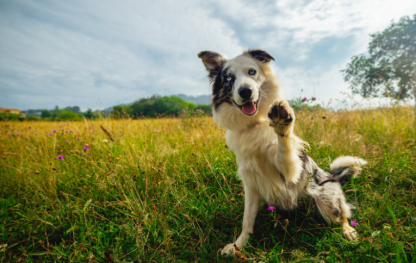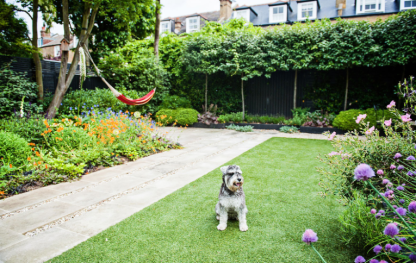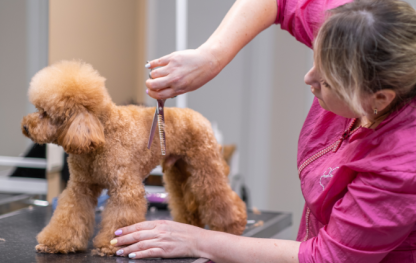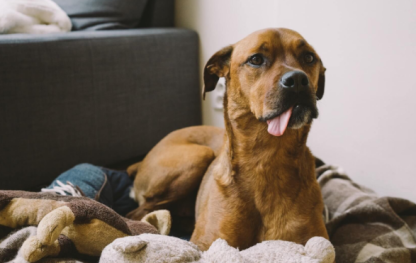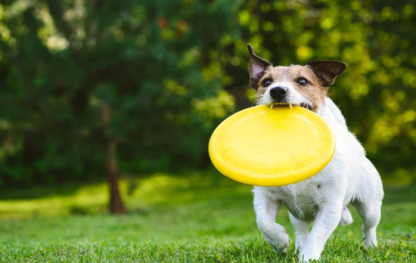Seasonal Grooming Tips: Adjusting Your Routine for Different Weather
Keeping your dog well-groomed throughout the year isn’t just about keeping them looking good—it’s essential for their health, comfort, and well-being. As the seasons change, so do your dog’s grooming needs. Cold, dry winters and hot, humid summers present different challenges, making it important to adjust your grooming routine to match the weather.
Here’s how to adapt your dog’s grooming habits for each season to ensure their coat and skin stay healthy year-round.
Spring: Shedding Season & Allergy Awareness
As temperatures rise, many dogs shed their thick winter coats in preparation for warmer weather. Spring also brings allergens, mud, and more outdoor activity, requiring a refreshed grooming routine.
Spring Grooming Tips:
- Increase brushing sessions to remove loose fur and prevent mats, especially for double-coated breeds like Huskies or German Shepherds.
- Use a de-shedding tool or undercoat rake to help control excessive shedding.
- Bathe your dog as needed to remove pollen, dirt, and mud from outdoor adventures.
- Wipe your dog’s paws and belly after walks to prevent allergens from spreading indoors.
- Check for early signs of fleas and ticks, as these pests become more active in spring.
Spring is the perfect time to schedule a professional grooming session to help your dog transition to the new season with a clean and healthy coat.

Summer: Keeping Your Dog Cool & Comfortable
Warmer temperatures mean more outdoor activities, but heat, humidity, and sun exposure can take a toll on your dog’s skin and coat. Proper grooming helps keep them cool and prevents overheating and skin irritations.
Summer Grooming Tips:
- Brush regularly to remove tangles and improve airflow through your dog’s coat.
- For long-haired breeds, consider a trim (but not a full shave)—cutting fur too short can expose their skin to sunburn.
- Give more frequent baths to wash away sweat, dirt, and allergens. Use a moisturizing shampoo to prevent dry skin.
- Check and clean your dog’s ears weekly, as heat and moisture increase the risk of ear infections.
- Trim paw fur and nails to prevent hot pavement burns and debris buildup.
- Always provide shade and fresh water during outdoor activities to avoid overheating.
If your dog loves to swim, rinse them with fresh water after every swim to remove chlorine, salt, or bacteria from lakes and pools.
Fall: Preparing for Coat Growth & Skin Protection
As the weather cools, dogs begin growing a thicker coat to prepare for winter. Fall is an ideal time to focus on skin health and coat conditioning.
Fall Grooming Tips:
- Brush more often to remove dead hair and prevent matting as the winter coat comes in.
- Use a hydrating conditioner to keep the coat soft and prevent seasonal dryness.
- Clean and moisturize paw pads to prevent cracking from cooler, drier air.
- Continue flea and tick prevention, as some pests remain active into fall.
- Keep ears dry and clean, as ear infections can increase with damp weather.
Since fall is a transition season, establishing good grooming habits now will help your dog stay comfortable in the colder months ahead.

Winter: Preventing Dry Skin & Managing Coat Health
Cold weather and indoor heating can cause dry skin, cracked paw pads, and static-prone fur. Dogs rely on their coats for warmth, so proper grooming is essential for maintaining a healthy, protective coat.
Winter Grooming Tips:
- Bathe less frequently, as overbathing can strip natural oils and cause dry, flaky skin.
- Use a moisturizing dog shampoo or conditioner to combat winter dryness.
- Brush regularly to remove dead fur and distribute natural oils, keeping the coat insulated.
- Trim, but don’t shave, long-haired dogs—fur acts as a natural barrier against the cold.
- Protect your dog’s paws with paw balm or dog boots to prevent frostbite and irritation from ice and salt.
- After walks, wipe paws, legs, and belly to remove salt and snow that can irritate the skin.
Dogs with short or thin coats may benefit from wearing a sweater or coat on extremely cold days.
General Year-Round Grooming Tips
While each season has its specific challenges, there are a few grooming practices that should be maintained throughout the year:
- Regular nail trimming prevents discomfort and joint issues.
- Ear cleaning helps prevent infections, especially for floppy-eared breeds.
- Brushing teeth or using dental treats keeps your dog’s oral health in check.
- Checking for lumps, bumps, or parasites ensures early detection of health issues.
By adapting your dog’s grooming routine to the seasons, you can help them stay comfortable, healthy, and happy year-round.
Final Thoughts
Your dog’s grooming needs change with the seasons, and adjusting their routine accordingly ensures they stay clean, comfortable, and protected throughout the year. From managing seasonal shedding in spring to protecting paws from winter’s harsh conditions, staying ahead of grooming needs is key to your pet’s overall health.
By maintaining consistent grooming habits and making seasonal adjustments, your furry friend will always look and feel their best—no matter the weather!
